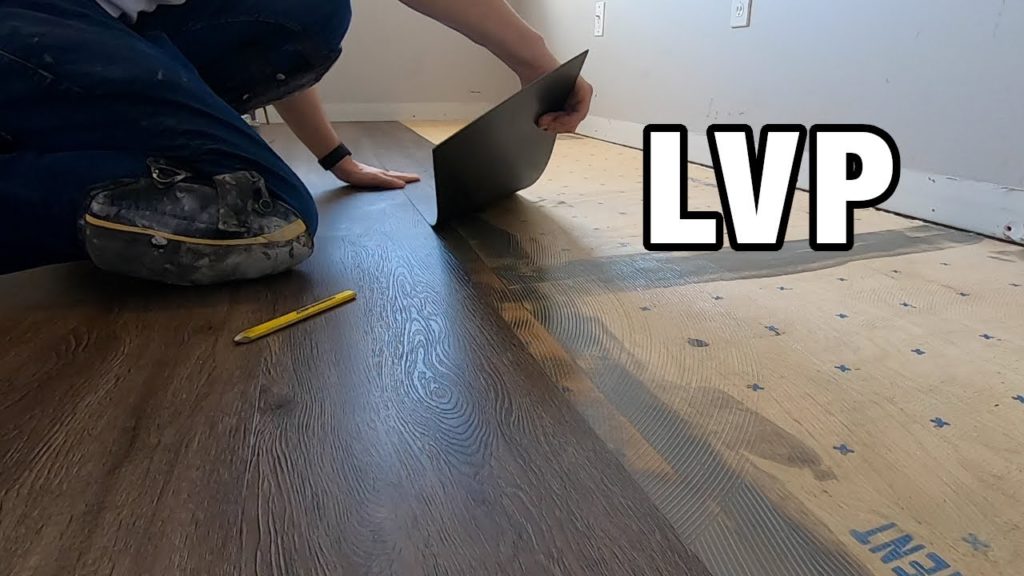Picture this: You’ve just finished laying down your brand new vinyl plank flooring, a beautiful, durable, and modern addition to your home. But then, a nagging question pops up: “Do I need a pad under this?” You’re staring at the bare subfloor, wondering if that extra layer of cushion is truly necessary.

Image: interior.tn
This is a common dilemma for homeowners tackling DIY flooring projects. The answer isn’t a simple “yes” or “no.” It depends on several factors, including the type of vinyl plank, the condition of your subfloor, and your desired level of comfort and sound dampening. Let’s dive into the world of vinyl plank flooring pads and uncover the truth behind this crucial decision.
Understanding Vinyl Plank Flooring Pads: More Than Just Cushion
Vinyl plank flooring pads are typically made from foam, cork, or a combination of materials. They’re often thinner than traditional underlayment for hardwood floors, usually ranging from 1/8″ to 1/2″ thick. But don’t be fooled by their size; these humble pads play a vital role in enhancing the overall performance of your vinyl plank floors.
Here’s a breakdown of the primary benefits a pad can offer:
- Comfort and Cushioning: Let’s face it, walking on a hard subfloor can feel unforgiving. A pad introduces a layer of softness, creating a more comfortable and luxurious underfoot experience. This is especially beneficial if you have young children or elderly individuals in your home.
- Sound Dampening: Vinyl plank flooring, while beautiful and durable, can be quite noisy. A pad works as a sound barrier, absorbing footsteps and reducing noise transmission between floors. This is particularly important for multi-level homes or if you’re concerned about disturbing downstairs neighbors.
- Subfloor Imperfection Mitigation: Even the most meticulously prepared subfloor might have minor imperfections like slight dips or unevenness. A pad acts as a leveling agent, ensuring a smooth and consistent surface for your vinyl plank installation.
- Moisture Control: While vinyl plank flooring is generally water-resistant, pads can provide an extra layer of protection against moisture. This is particularly useful in areas prone to spills, humidity, or even minor leaks.
- Insulation: Some foam pads offer excellent thermal insulation, helping to regulate the temperature of your flooring. This can be a significant advantage during colder months, making your floors feel warmer underfoot.
The Case for NOT Using a Pad: When Less Is More
While the benefits of a pad are undeniable, there are situations where skipping this extra layer might be the better choice.
- Thin Vinyl Plank Flooring: Some vinyl plank flooring is designed to be installed directly on a subfloor, meaning it’s already engineered for minimal thickness. Adding a pad can make the overall flooring too thick, leading to problems with door thresholds or uneven transitions between rooms.
- Perfectly Level Subfloor: If your subfloor is exceptionally smooth and level, there’s little need for a pad to fill in any imperfections. This eliminates the additional cost and adds another layer to your installation.
- Limited Subfloor Height: Your home’s structure might dictate a specific subfloor height. If you’re working with tight clearances, adding a pad can push the finished floor height above the threshold, requiring adjustments to doors and other elements.
- Underlayment Already Included: Certain types of vinyl plank flooring come with an integrated underlayment layer, meaning a separate pad is unnecessary. Check the product specifications to make sure you’re not adding redundancy.
Choosing the Right Pad for Your Needs
Deciding whether or not to use a pad is only half the battle. If you decide a pad is necessary, the next step is selecting the right one. Here are some key factors to consider:
- Type of Vinyl Plank Flooring: Some vinyl plank floors are designed for specific types of pads, so check the manufacturer’s recommendations. Ensure compatibility for optimal performance and warranty validity.
- Subfloor Type: A wood subfloor might require a different pad from a concrete one. The chosen pad should be appropriate for your unique subfloor material.
- Desired Level of Comfort and Noise Reduction: If comfort and sound dampening are top priorities, opt for a thicker pad with a higher density.
- Budget: Pad options range in price, from basic foam to more expensive cork or engineered materials. Decide what level of investment aligns with your budget and flooring project goals.

Image: clsa.us
Expert Tips to Optimize Your Vinyl Plank Flooring
Whether you choose to use a pad or not, here are some expert tips to maximize the lifespan and performance of your vinyl plank flooring:
- Proper Preparation: The foundation of a successful vinyl plank floor installation lies in a well-prepared subfloor. Ensure it’s clean, dry, and level to avoid future issues with warping or unevenness.
- Accurate Measurement and Cutting: Measure diligently and cut your planks precisely to avoid gaps or misalignment, enhancing the overall aesthetic appeal.
- Appropriate Installation Methods: Use the recommended installation techniques and adhesives for your chosen vinyl plank flooring type. This will ensure a secure and durable bond with the subfloor.
- Maintenance and Cleaning: While vinyl plank flooring is generally low-maintenance, proper cleaning practices will extend its longevity. Avoid harsh chemicals and abrasive cleaning tools that can damage the surface.
Do You Need A Pad Under Vinyl Plank Flooring
The Bottom Line: A Well-Informed Choice
The decision of whether or not to use a pad under your vinyl plank flooring isn’t a one-size-fits-all answer. Understanding the benefits, drawbacks, and nuances of utilizing a pad, along with the specific characteristics of your flooring project, will empower you to make an informed and confident choice. Whether you embrace the added comfort and sound dampening or opt for a minimal installation, your vinyl plank flooring will stand the test of time, adding beauty and functionality to your home for years to come.





